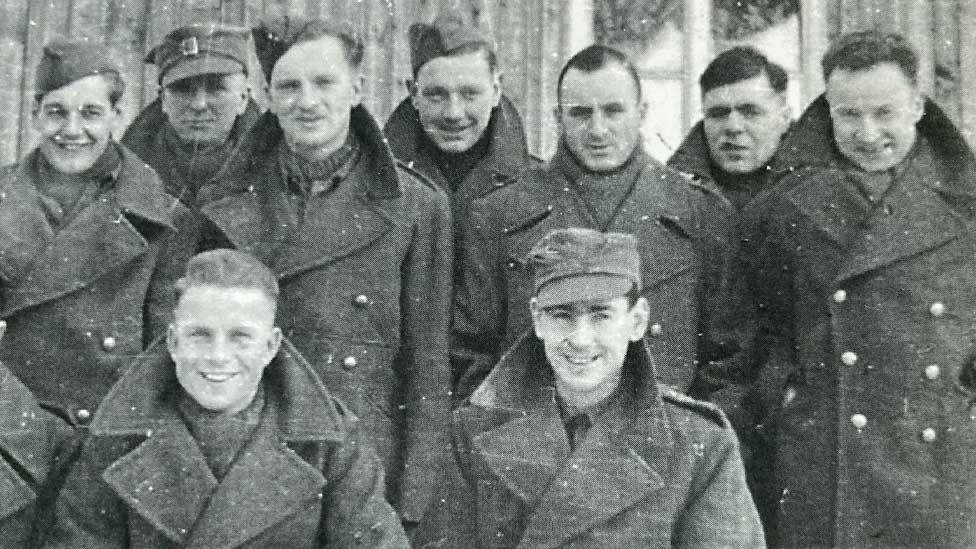WW2 helmets found in France linked to SS massacre
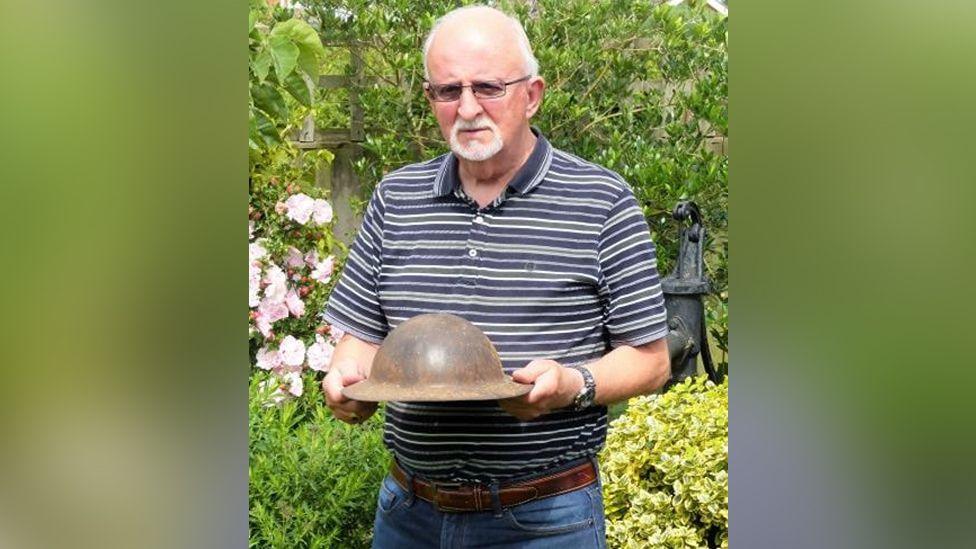
Dennis O'Callaghan holding one of the helmets - his father Bill was one of only two men to survive the massacre after the soldiers surrendered on 27 May 1940
- Published
Two helmets belonging to World War Two British soldiers massacred by the SS in May 1940 have been discovered and donated to museums in France and England.
Only two men survived the execution out of the 99 soldiers from the 2nd Battalion The Royal Norfolk Regiment, 1st Battalion The Royal Scots and other British Expeditionary Force personnel, who were lined up and machine-gunned.
Last year, a French farmer clearing out a barn near the massacre site came across the helmets, which historian Neil Storey confirmed were Royal Norfolk issue.
Le Paradis Massacre website historian John Head said relatives of the victims became "very emotional" on seeing the helmet due to be displayed in Norwich.
"Of the 99 men machine-gunned, 97 did not survive, so if that helmet doesn't belong to [survivors] Bert Pooley and Bill O'Callaghan, it could be the only artefact that has returned home from those who didn't return - that's how important it is," he said.
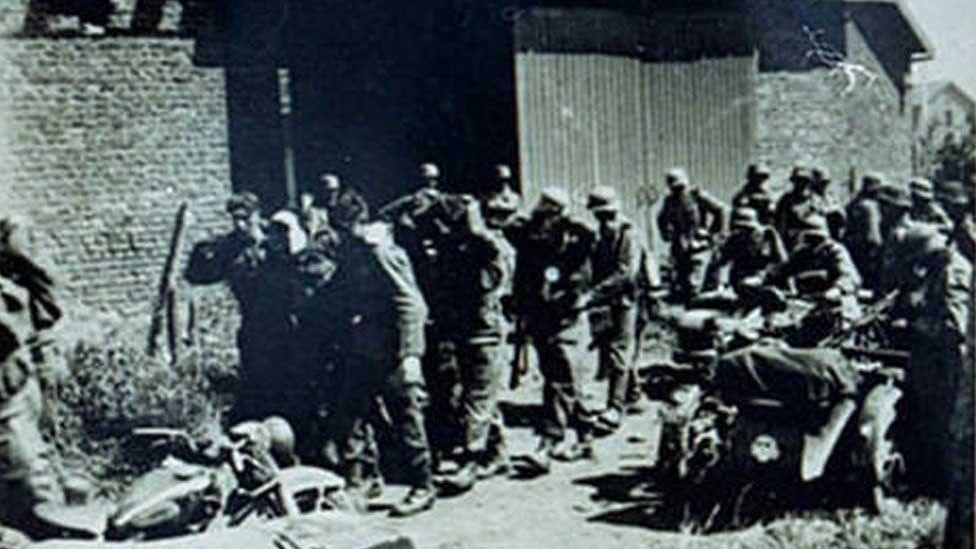
The moment of surrender by men from the Royal Norfolk and Royal Scots battalions in 1940 was photographed by SS soldier Herbert Brunnegger
The massacre took place on 27 May 1940 when the soldiers, who had fought with little rest or food for 17 days, ran out of ammunition and surrendered at Le Paradis in northern France.
They had been ordered to hold back the German advance across France for as long as possible, to enable the evacuation of nearly 340,000 Allied soldiers from the beaches of Dunkirk.
The men expected to be treated as prisoners of war under the Geneva Conventions, external, a series of international treaties designed to protect captured soldiers.
Instead, their dog tags were removed and they were lined up and executed on the orders of Capt Fritz Knoechlein, of the 3rd SS Division (Totenkopf).
Amazingly, Pte Pooley and Pte O'Callaghan survived the massacre and imprisonment, and were able to bring Knoechlein to justice after the war.
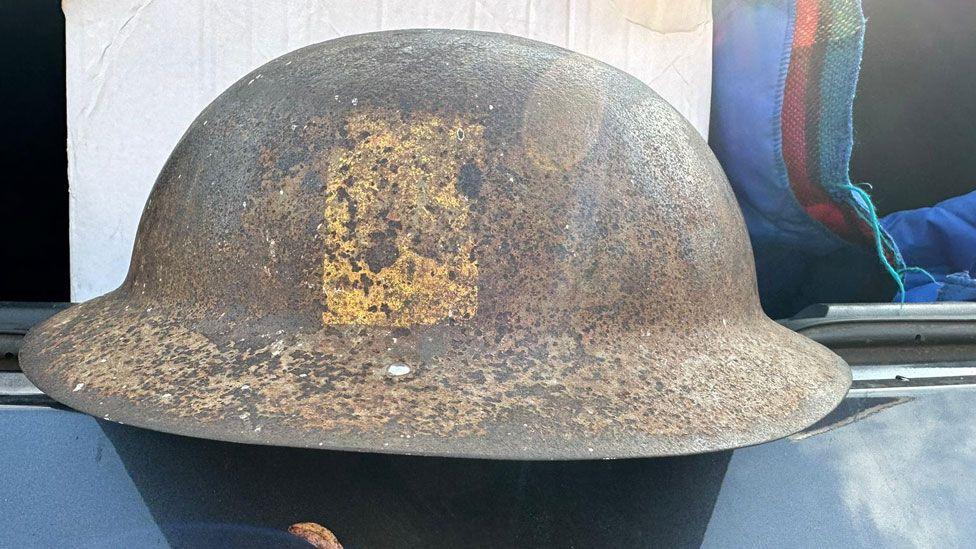
The two helmets have faded yellow oblongs with pigments of black, which helped a military historian identify them as belonging to Norfolk battalion soldiers
"Farmer Jean-Charles Dufour sent me an email last year which just stunned me, saying we've found two helmets when we were clearing up the farm for sale," said Mr Head.
Mr Storey, a Norfolk-based military historian, was asked to identify them and he confirmed they were World War One issue, which had been repurposed.
Mr Head said: "He could identify a chin strap modification of the helmet when they were fitted with new liners in 1938 to 1939, so we knew it was a World War Two infantry helmet.
"On their sides was a faded yellow oblong with pigments of black, and Neil Storey felt it was an allusion to the puggaree flash which we know was the Norfolk's colours.
"The yellow facing was for the regiment and the black line was for being in mourning for Sir John Moore of the 9th Regiment of Foot, which later became the Norfolks."
The Lt Gen was fatally wounded at Corunna, Spain, during the Napoleonic Wars, external.
LISTEN: A helmet recovered from a World War Two massacre is being returned to Norfolk
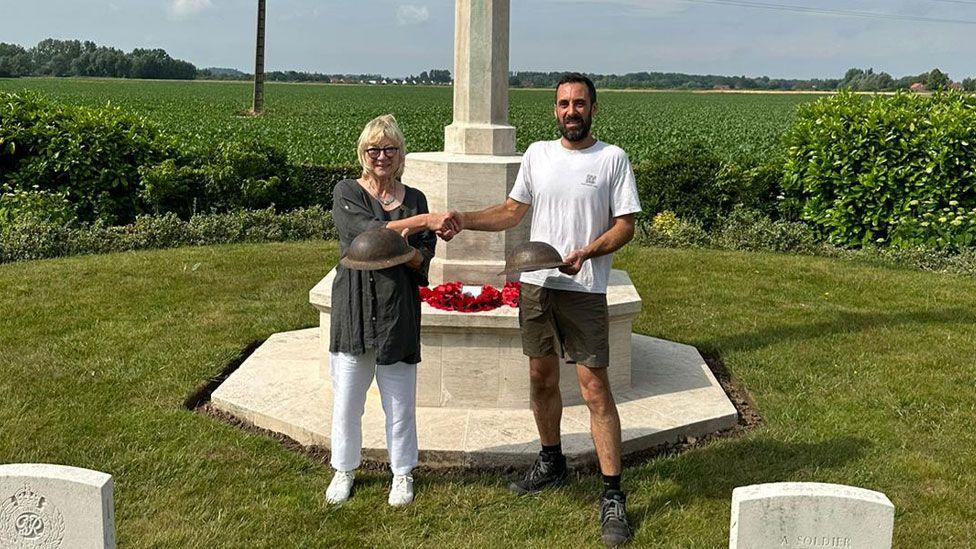
A friend of the Le Paradis Massacre history group Biddy Fisher (left) repatriated one of the helmets, meeting Jean-Charles Dufour who discovered them in a barn
The soldiers had been ordered to pile up their equipment near the barn, including helmets, shortly before they were executed.
Two years later, Le Paradis's citizens persuaded the German authorities to let them exhume their bodies and rebury them in the village cemetery.
It is believed the rediscovered helmets were among those put on wooden posts surrounding their graves.
Mr Head said: "We agreed to give one helmet to the Le Paradis museum and the Royal Norfolk Regimental Museum in Norwich Castle is to have the other.
"We've also notified the key people in our group, those with direct links to the massacre and whose relative it might have belonged to, and they've seen it and it's been very emotional."
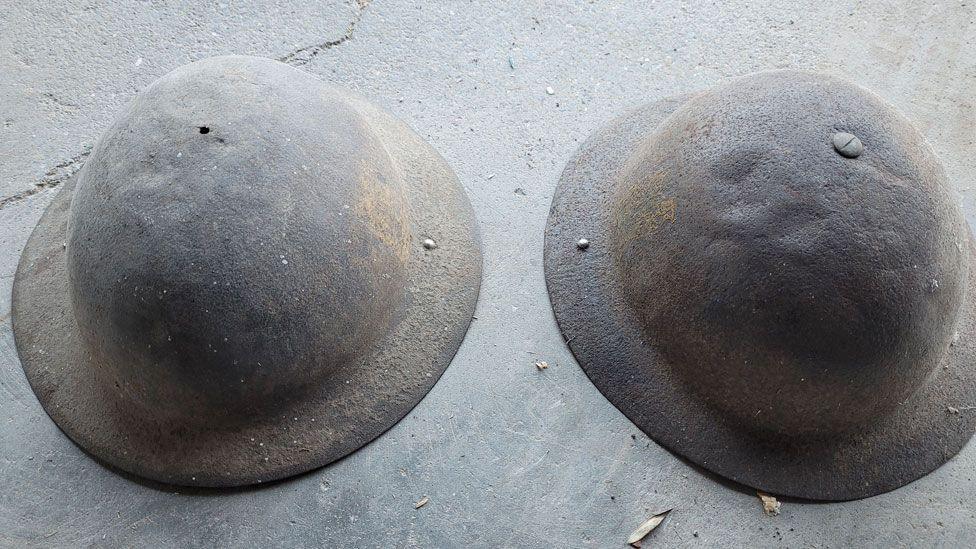
John Head was "stunned" at the discovery of helmets, which are probably the only tangible link to the men who died
Get in touch
Do you have a story suggestion for Norfolk?
Follow Norfolk news on BBC Sounds, Facebook, external, Instagram, external and X, external.
Related topics
You may also be interested in
- Published6 June 2024
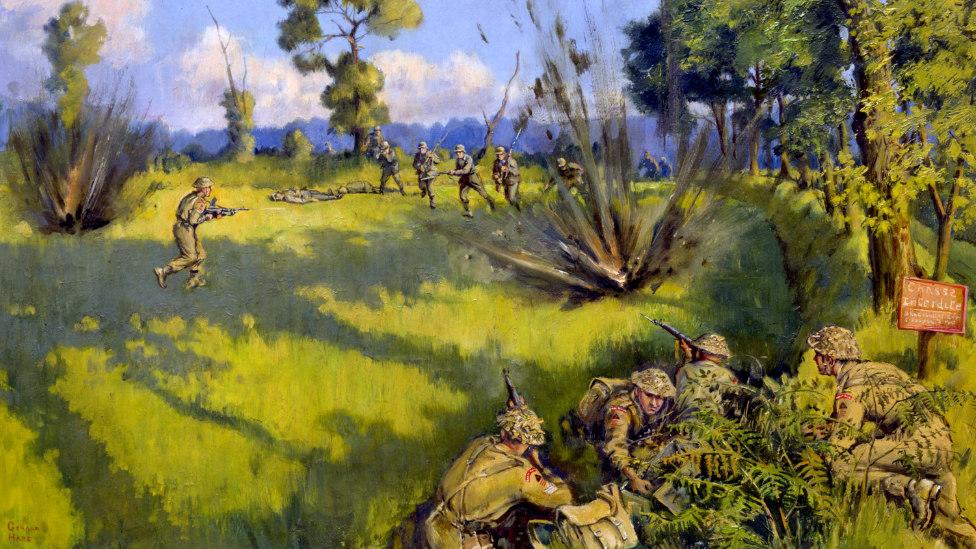
- Published6 August 2024
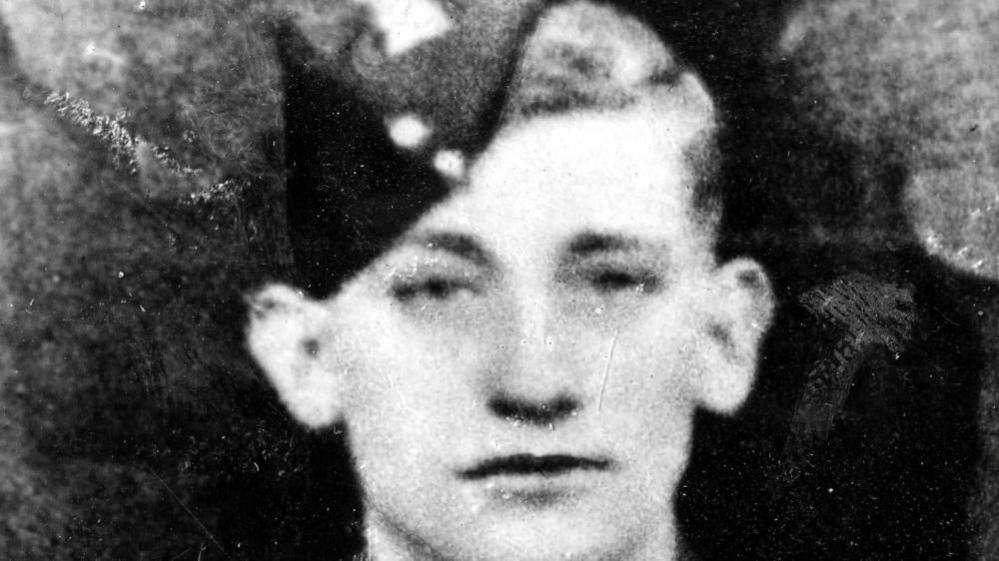
- Published28 May 2022
